A few pictures, Fort Pitt Hi-Railers modules. Click on the underlined phrase to access a picture file. Framing material is good grade, 1" X 4", lumber with 1/4" luan board for the deck. May be $100+ per module material cost. Marginal quality lumber/material eventually is a problem, we recently replaced framing lumber on one module that had warped at least 1" in six ft. Most modules are 6 ft X 3 ft, (37.5" with finish boards), (There are 8 ft. , 4 ft., 2 ft. and special application modules). Modules are, designed with the face boards, (edge of each module), for stacking, and compact transportation. Every other module is stacked upside down, face to face/back to back.
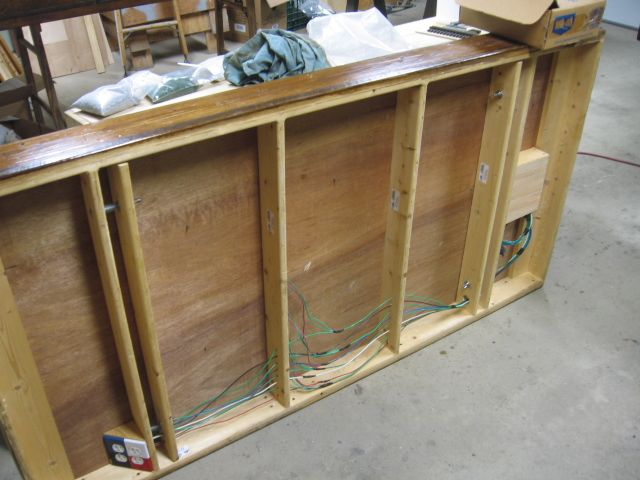
Clamp boards, the leg structure is clamped between these two boards. We recently increase the size of the 5" carriage bolts, 5/16" to 3/8", club members had complained that the small wing nuts, 5/16", were difficult to hand tighten.
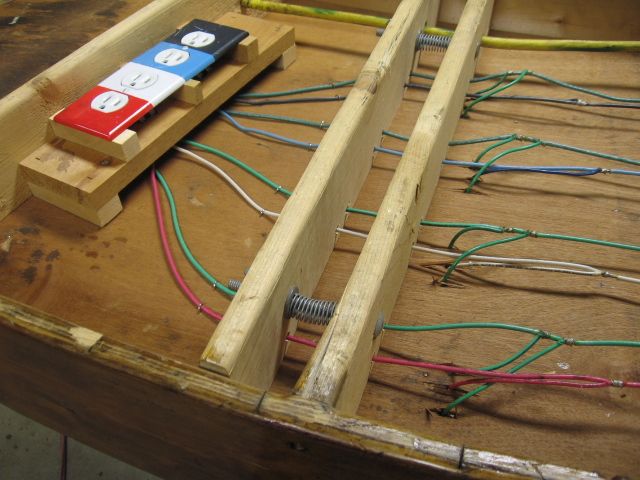
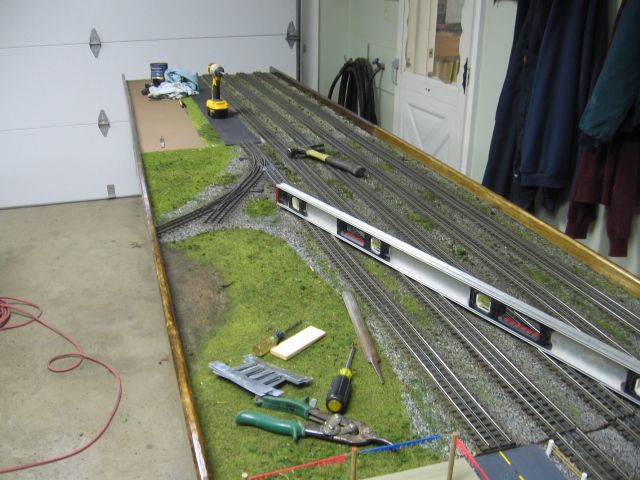

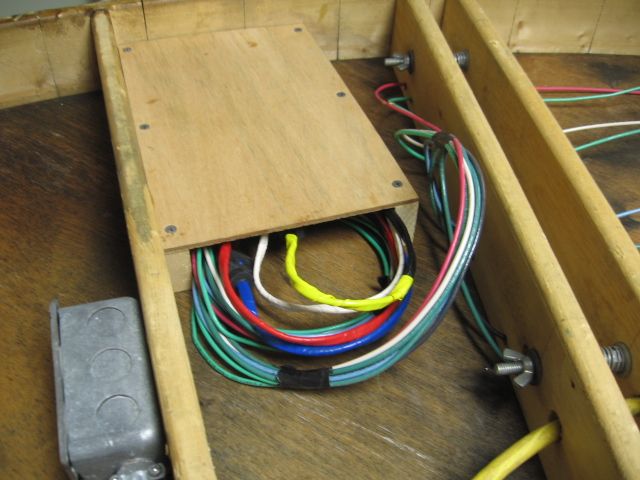
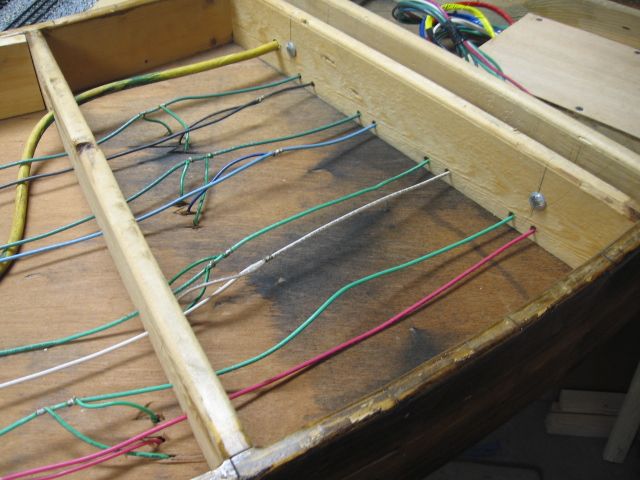
Most questions are about the wide-sweep corners, (outside is 6'4" radius, inside is 4'4" radius. Reasonable weight, not too heavy. I was able to place the curve on top of the straight module. Most modules should be handled by two persons. Planning a modular display should also include carts, trailers, and related equipment for safe handling.
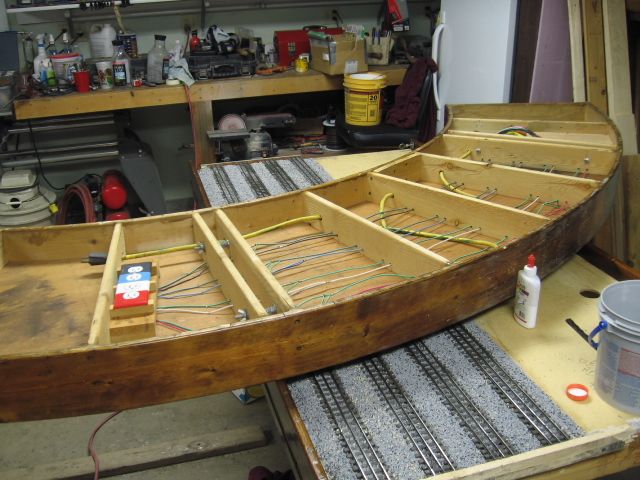
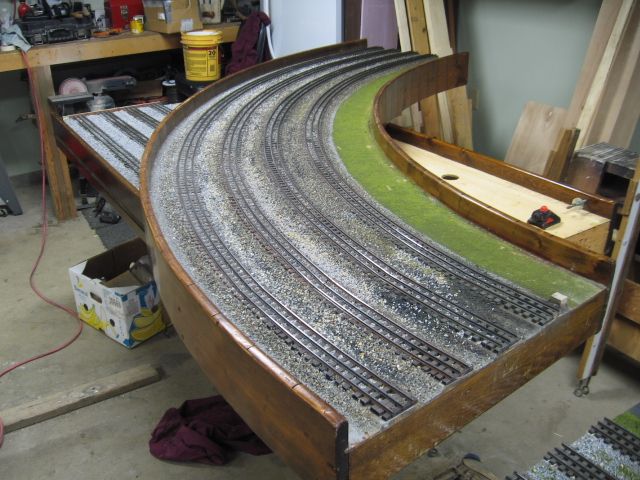
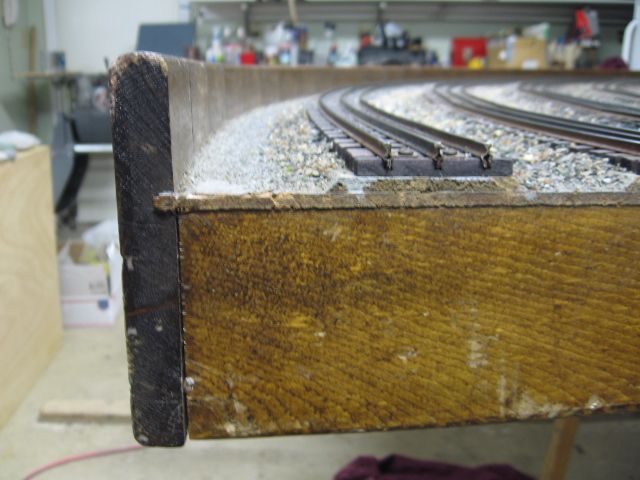
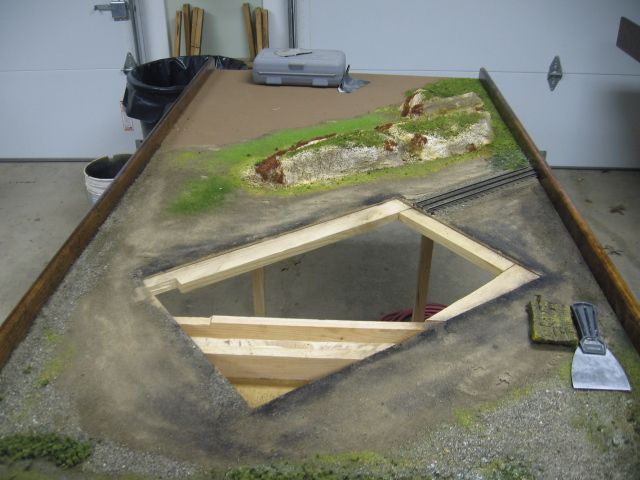
Leveling legs. These eye bolts can be turned by hand or a screw driver. Usually require oil after a few years of use.



Recent Set-up Pittsburgh Home and Garden Show. 48' X 42'.

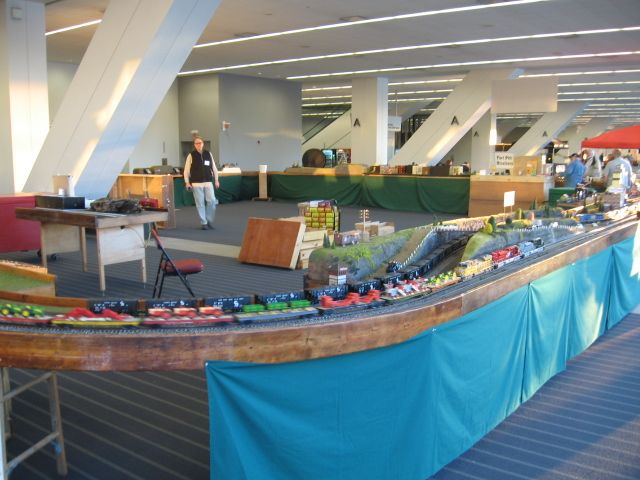
Working on module maintenance. We will be in the White Hall, Spring York TCA meet, late April, 2014.
 Have fun with your project
Have fun with your project
Mike CT, Fort Pitt Highrailers 






















